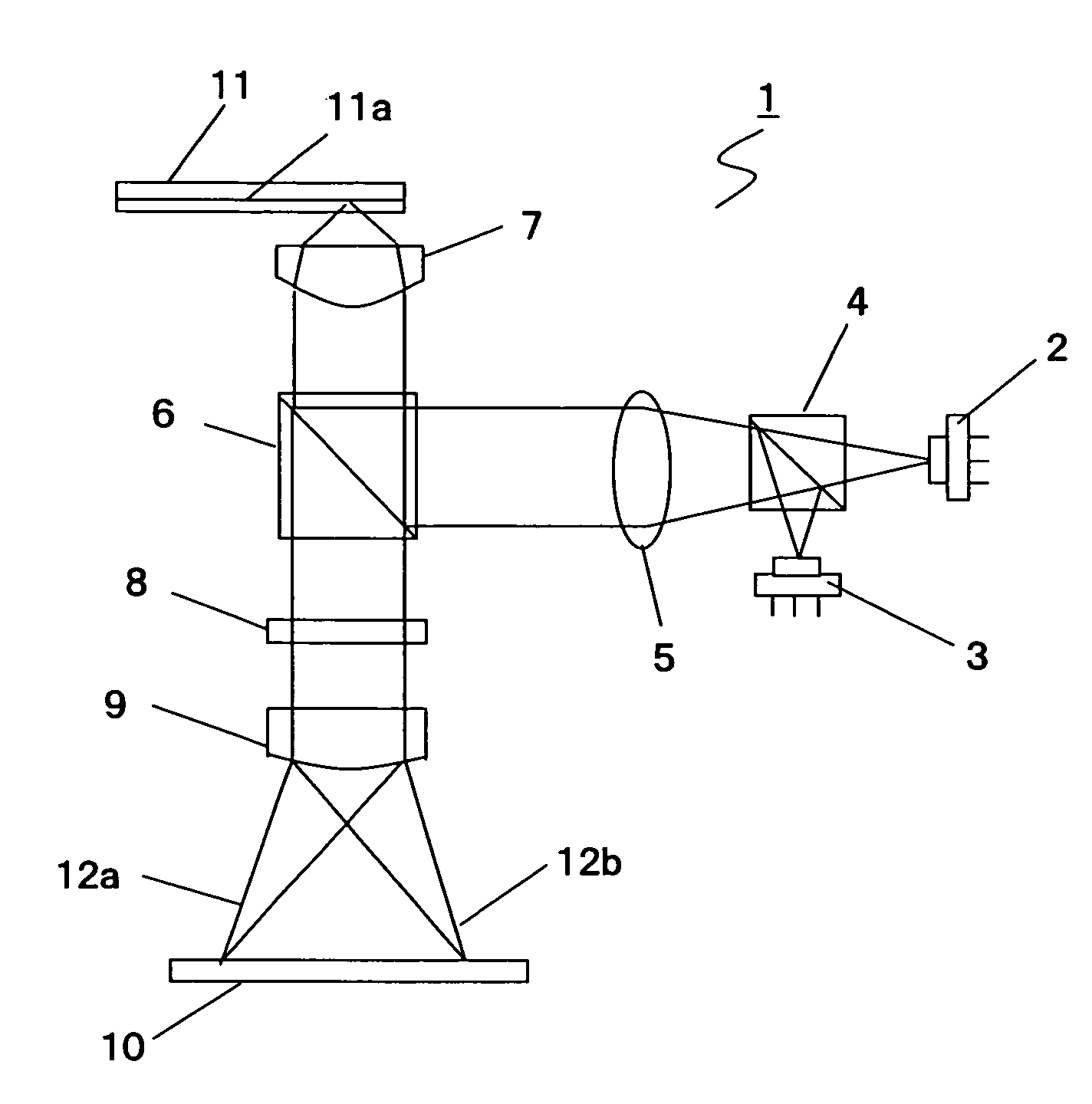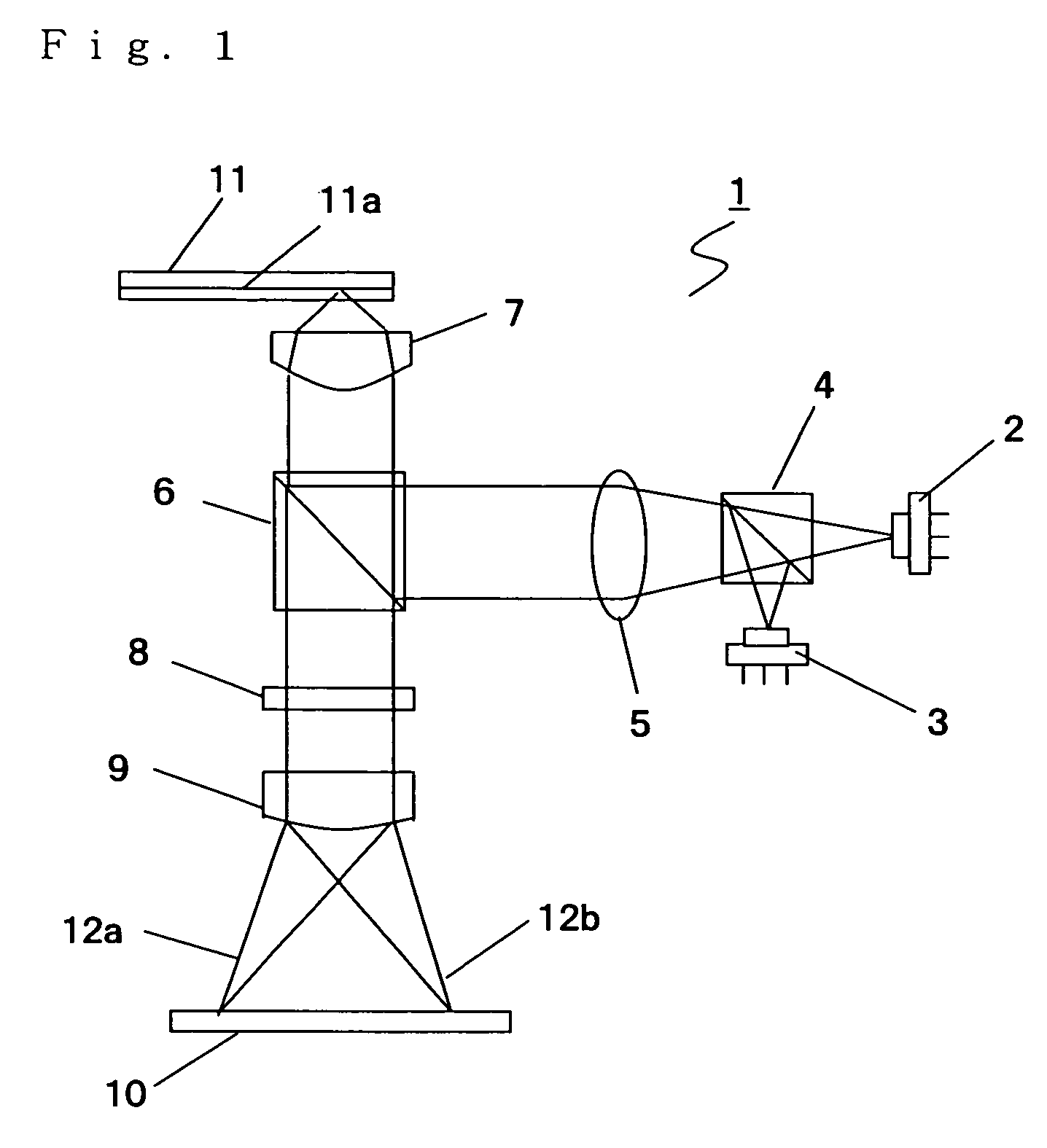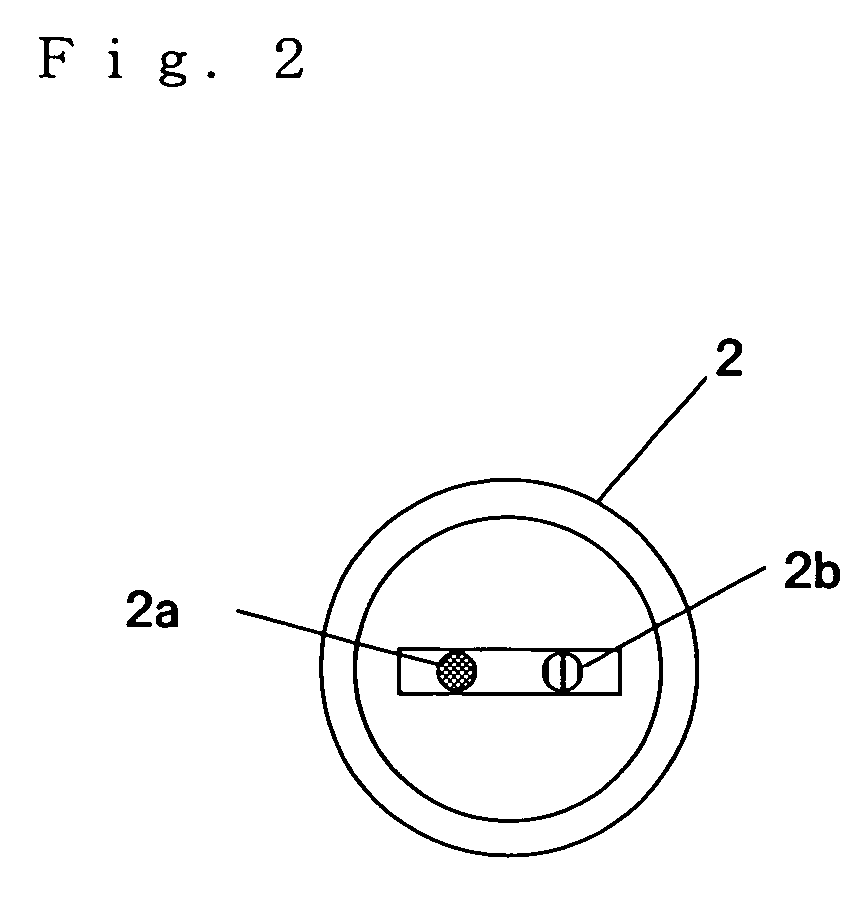Optical pickup device
a pickup device and optical technology, applied in the field of optical pickup devices, can solve the problems of increasing the burden of adjusting work, difficult to adopt the above-mentioned three-beam type, and difficult to achieve the above-mentioned adjustment type, so as to reduce the size of the photo detector and efficiently dispose of the photo detector
- Summary
- Abstract
- Description
- Claims
- Application Information
AI Technical Summary
Benefits of technology
Problems solved by technology
Method used
Image
Examples
first embodiment
[0036]The two-wavelength composite light source 2 is made up of a monolithic semiconductor laser having two light emission points that can emit a laser beam of 780 nm band supporting a CD and a laser beam of 650 nm band supporting a DVD. In addition, the light source 3 is a semiconductor laser that can emit a single wavelength laser beam of 405 nm band supporting a BD. Although the monolithic semiconductor laser is used as the two-wavelength composite light source 2 in the first embodiment, the present invention is not limited to this structure. For example, it is possible to use a hybrid semiconductor laser may be used, in which light sources manufactured separately are housed in one package.
[0037]The dichroic prism 4 allows the laser beams from the two-wavelength composite light source 2 that emits laser beams for a CD and a DVD to pass through, while it reflects the laser beam from the light source 3 that emits a laser beam for a BD. The laser beam that is allowed to pass through...
second embodiment
[0059]Note that FIG. 7 is an explanatory diagram for explaining a relationship between positions of the beam spots formed on the photo detector 10 by the 0 order light of the laser beams that are emitted from the two-wavelength composite light source 2 and the light source 3 and pass the hologram element 8 in the
[0060]An action when the two-wavelength composite light source 2 and the light source 3 are arranged as described above will be described. FIG. 8 is a schematic diagram showing schematically that the +1st diffracted light 12a and the −1st order light 12b generated by diffraction of the laser beams for a CD, for a DVD and for a BD in the hologram element 8 are received by the light receiving portions 14 and 15 provided to the photo detector 10 of the optical pickup device 1 in this embodiment.
[0061]As shown in FIG. 8, positions 17a, 17b and 17c of the spots formed on the light receiving portion 15 by the −1st order light 12b of the laser beams for a CD, for a DVD and for a BD...
PUM
| Property | Measurement | Unit |
|---|---|---|
| wavelength | aaaaa | aaaaa |
| wavelength | aaaaa | aaaaa |
| wavelength | aaaaa | aaaaa |
Abstract
Description
Claims
Application Information
 Login to View More
Login to View More - R&D
- Intellectual Property
- Life Sciences
- Materials
- Tech Scout
- Unparalleled Data Quality
- Higher Quality Content
- 60% Fewer Hallucinations
Browse by: Latest US Patents, China's latest patents, Technical Efficacy Thesaurus, Application Domain, Technology Topic, Popular Technical Reports.
© 2025 PatSnap. All rights reserved.Legal|Privacy policy|Modern Slavery Act Transparency Statement|Sitemap|About US| Contact US: help@patsnap.com



